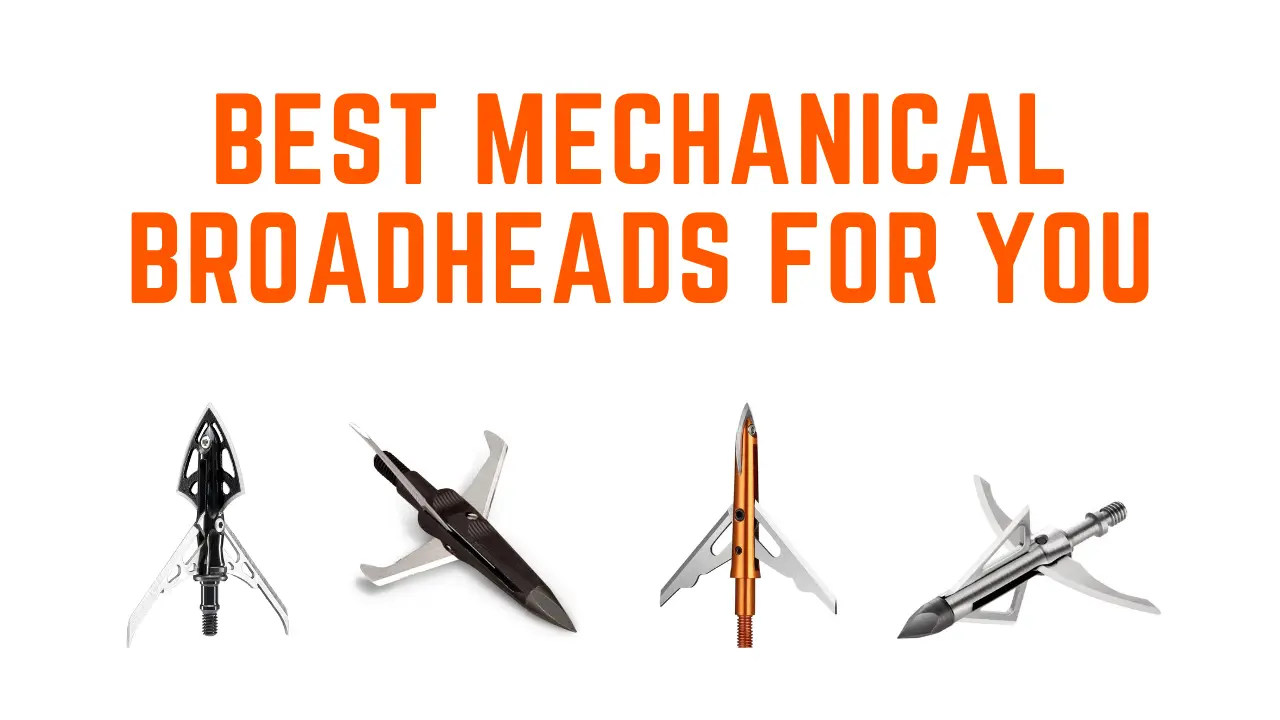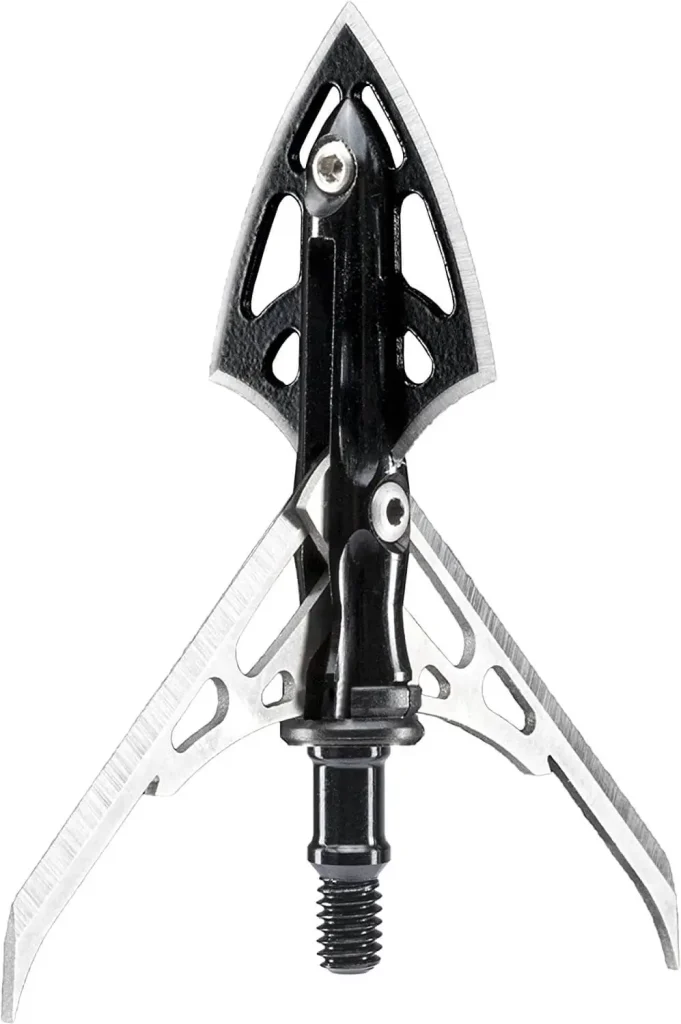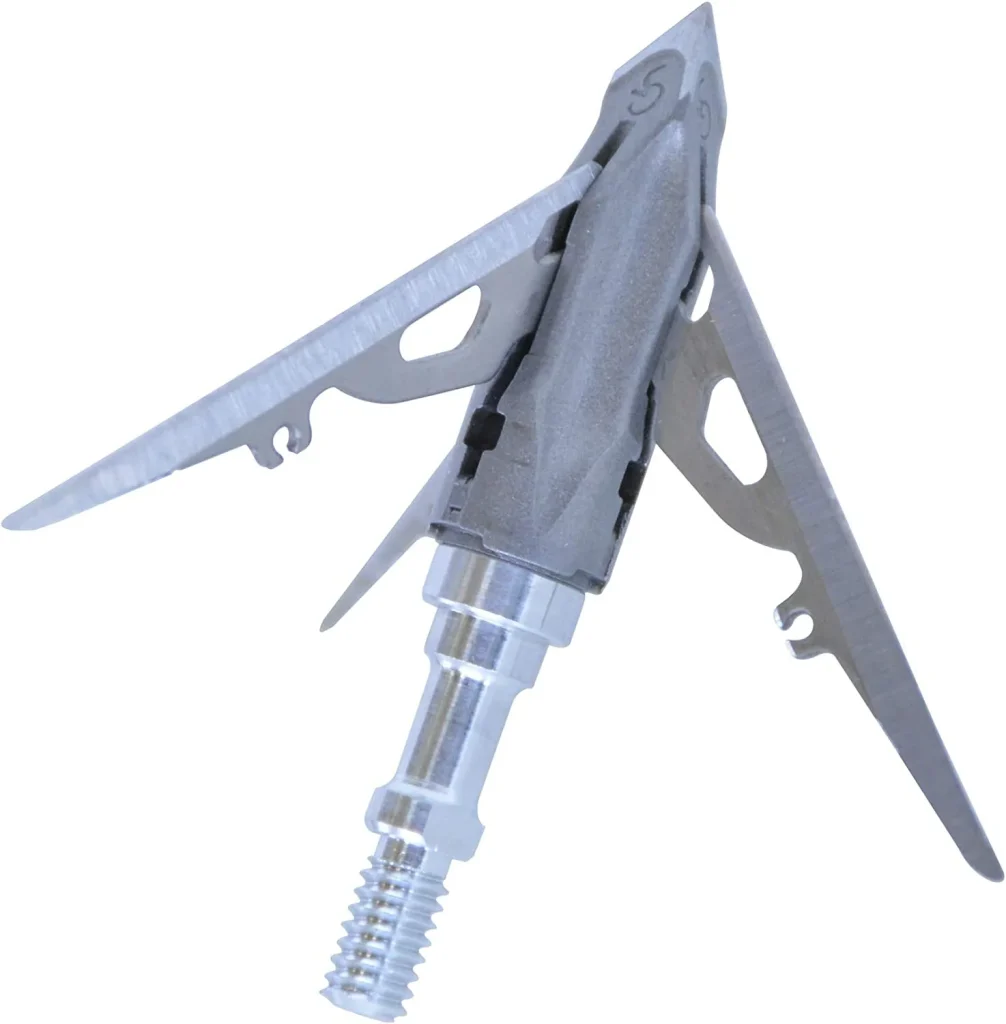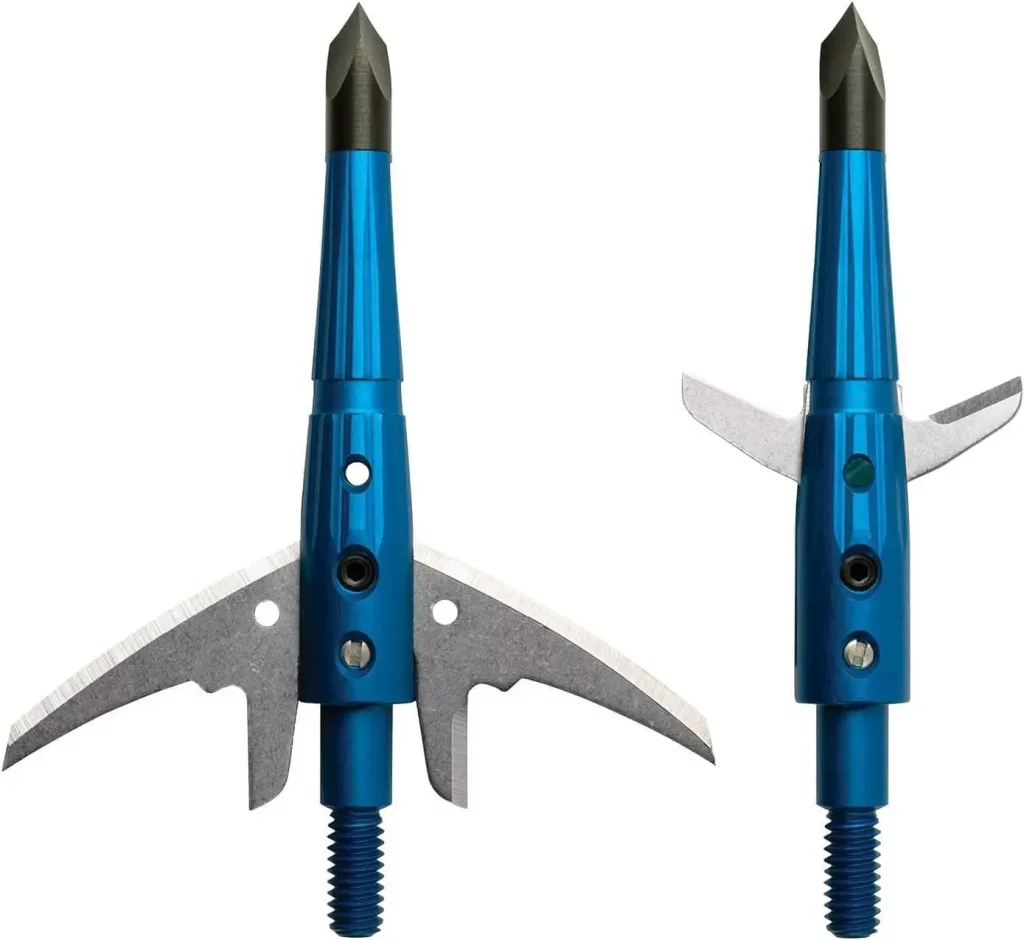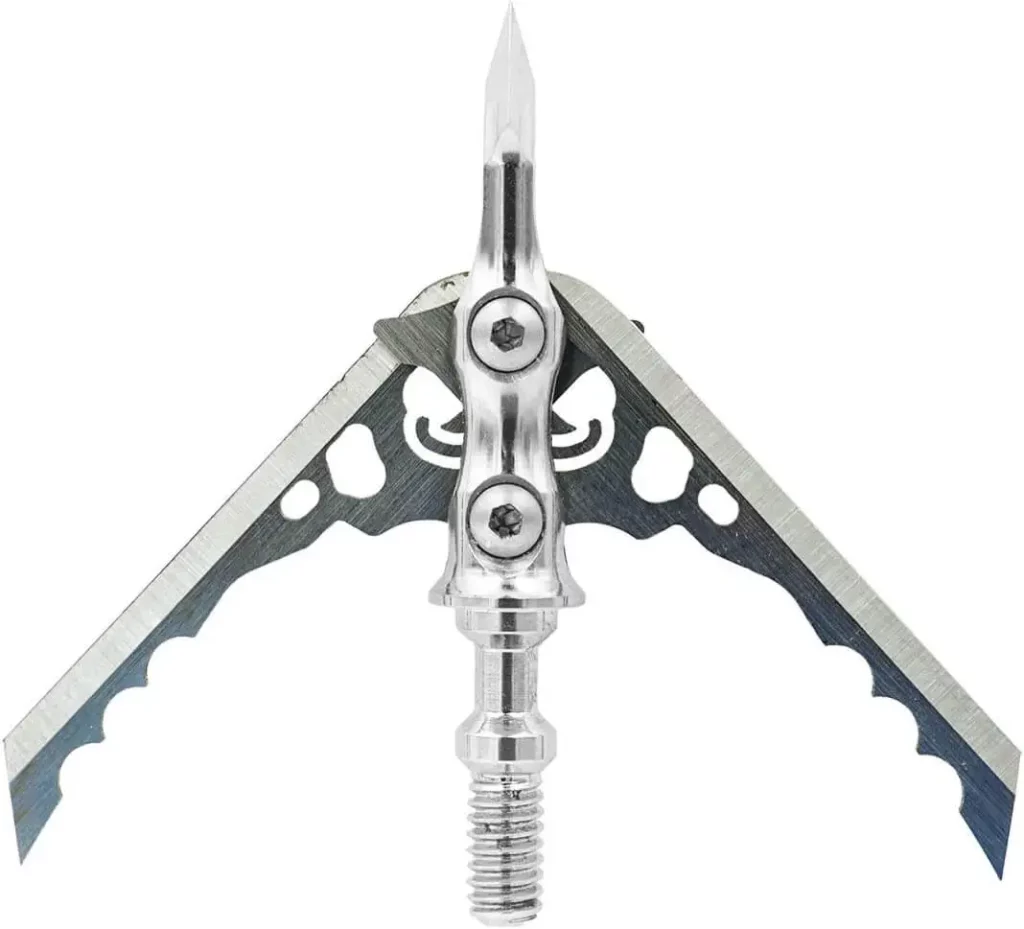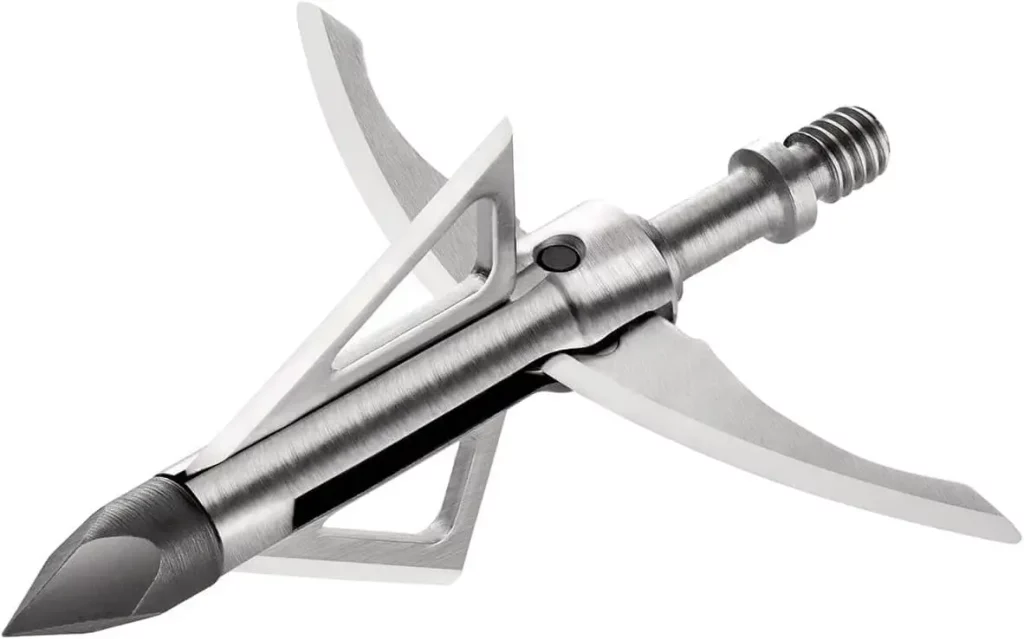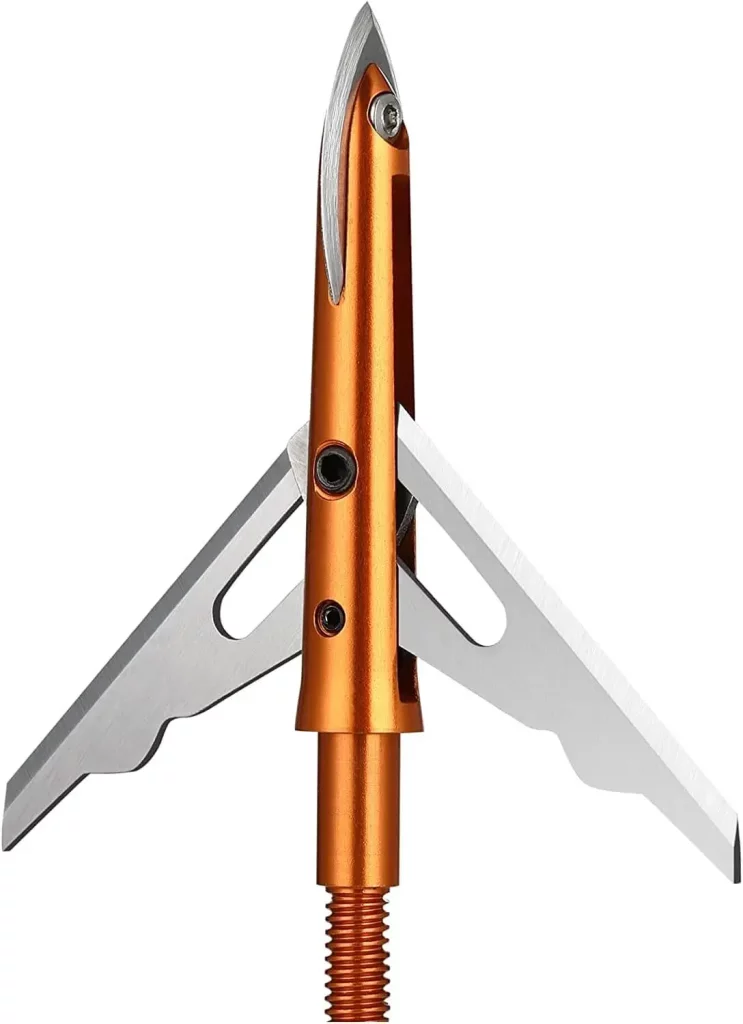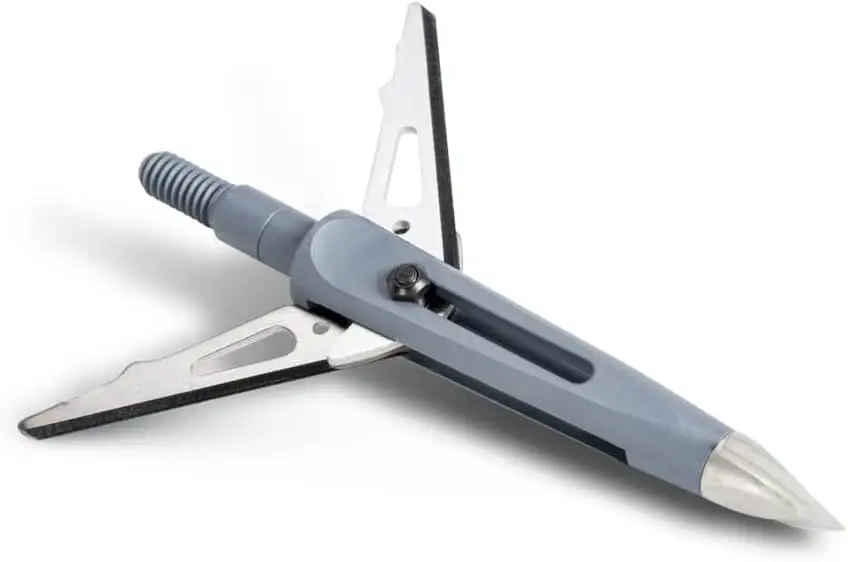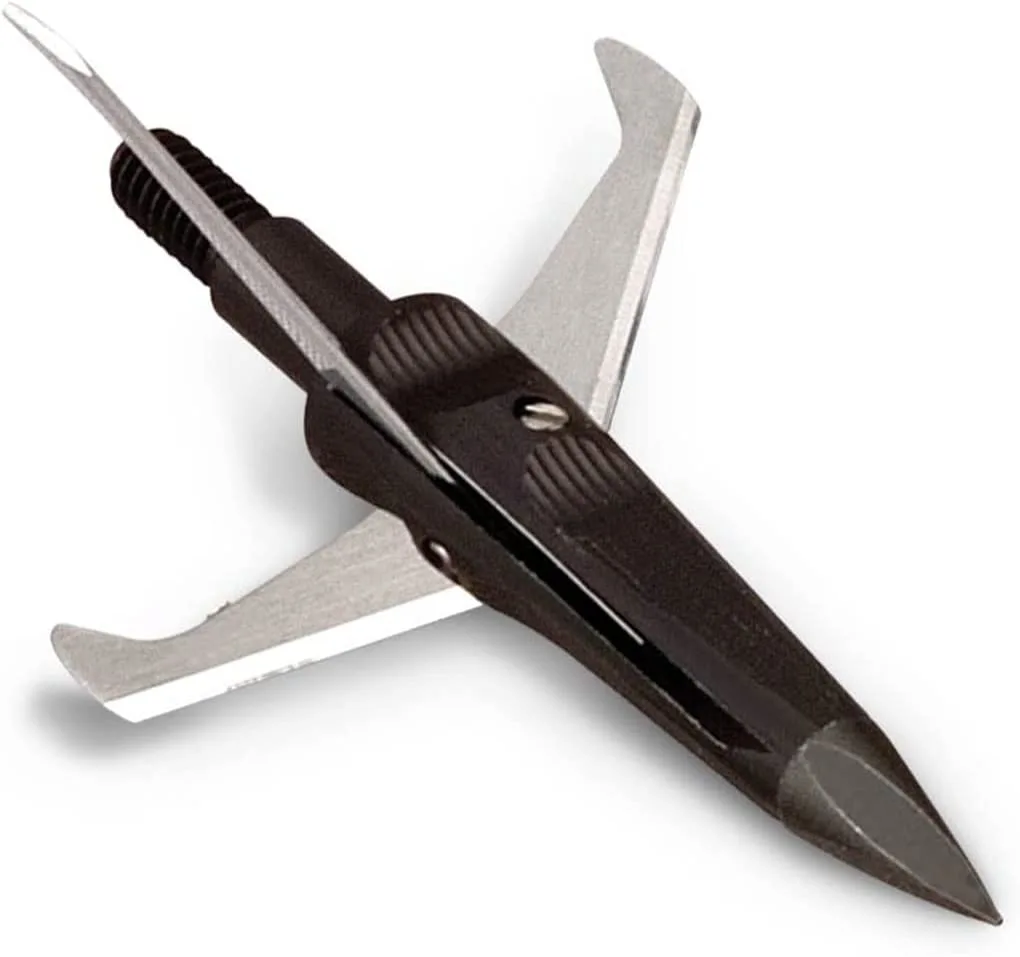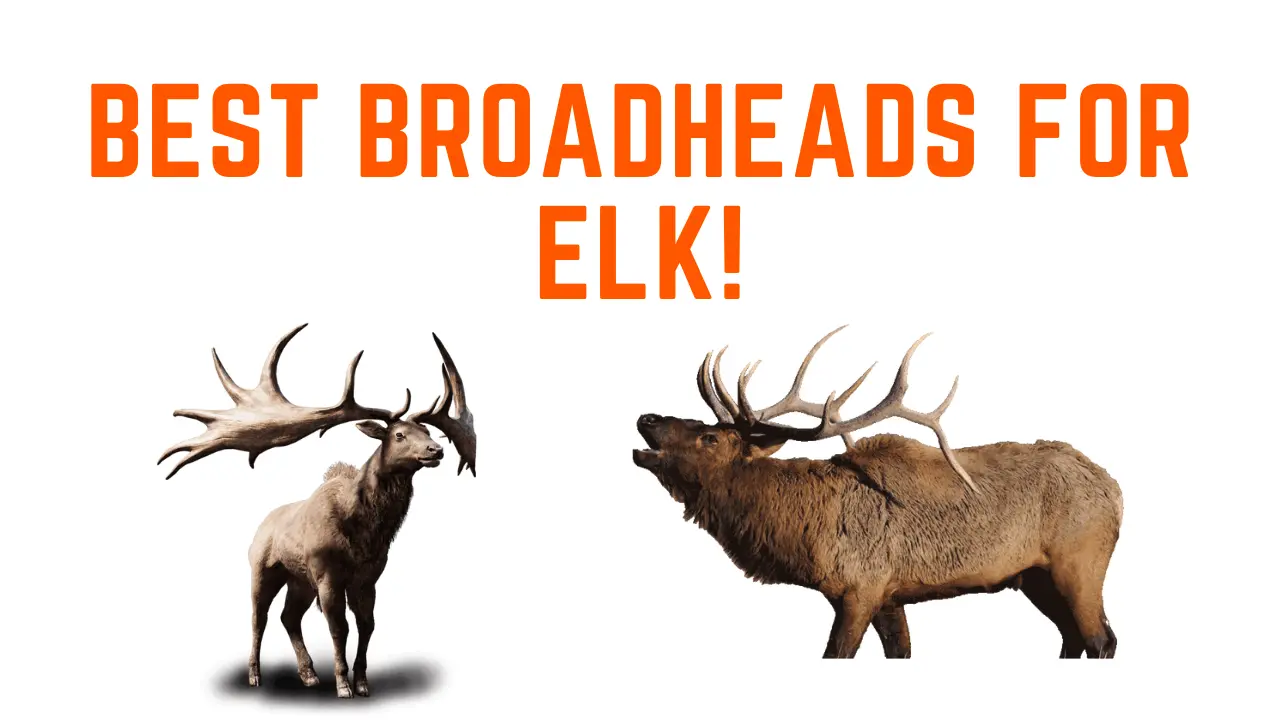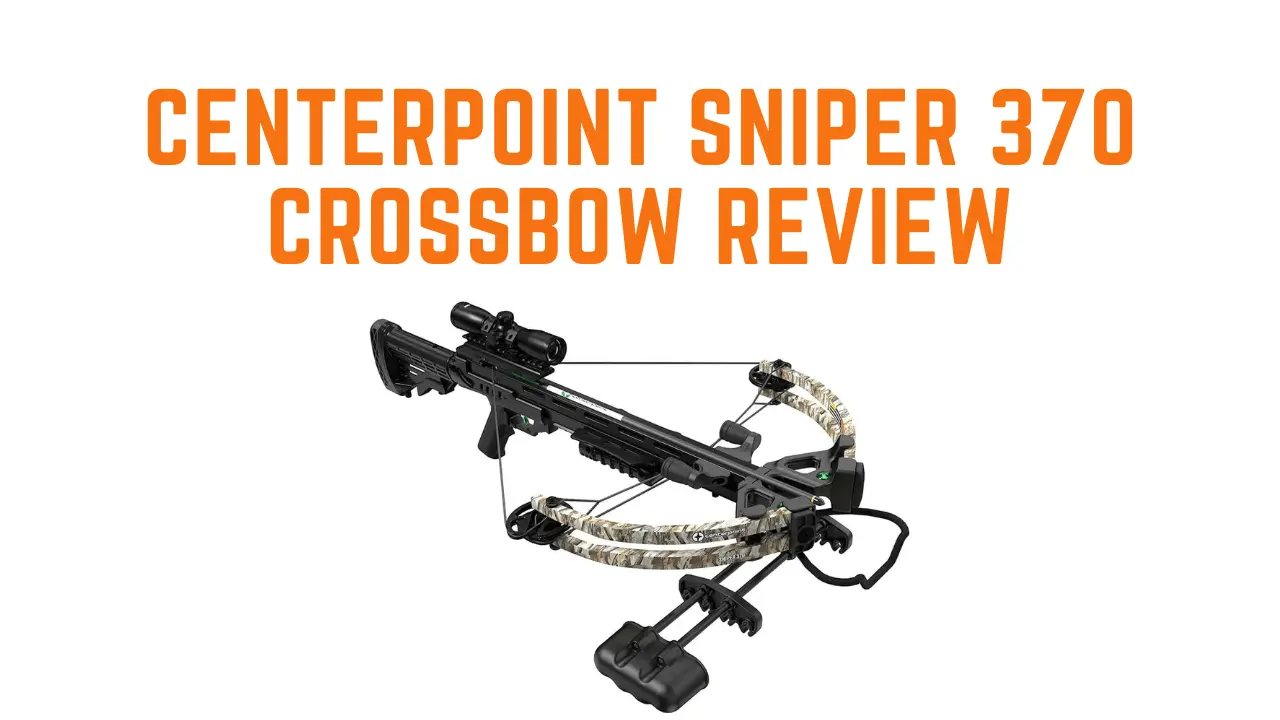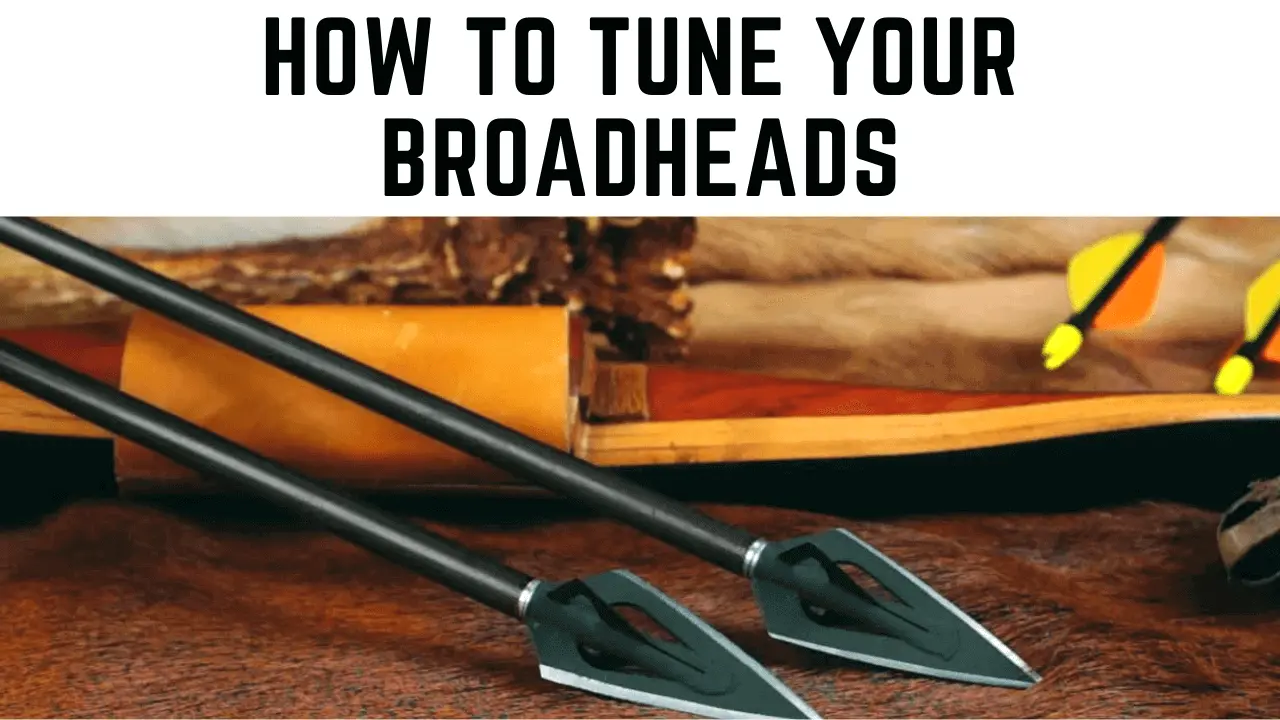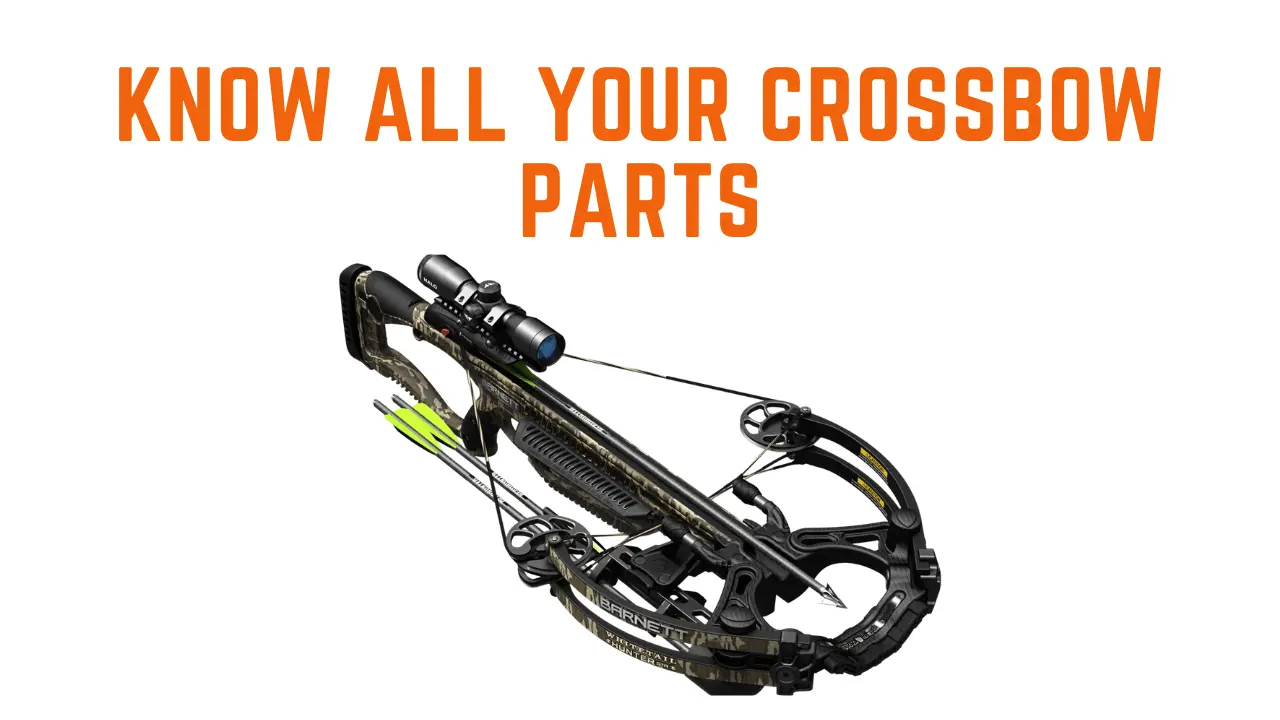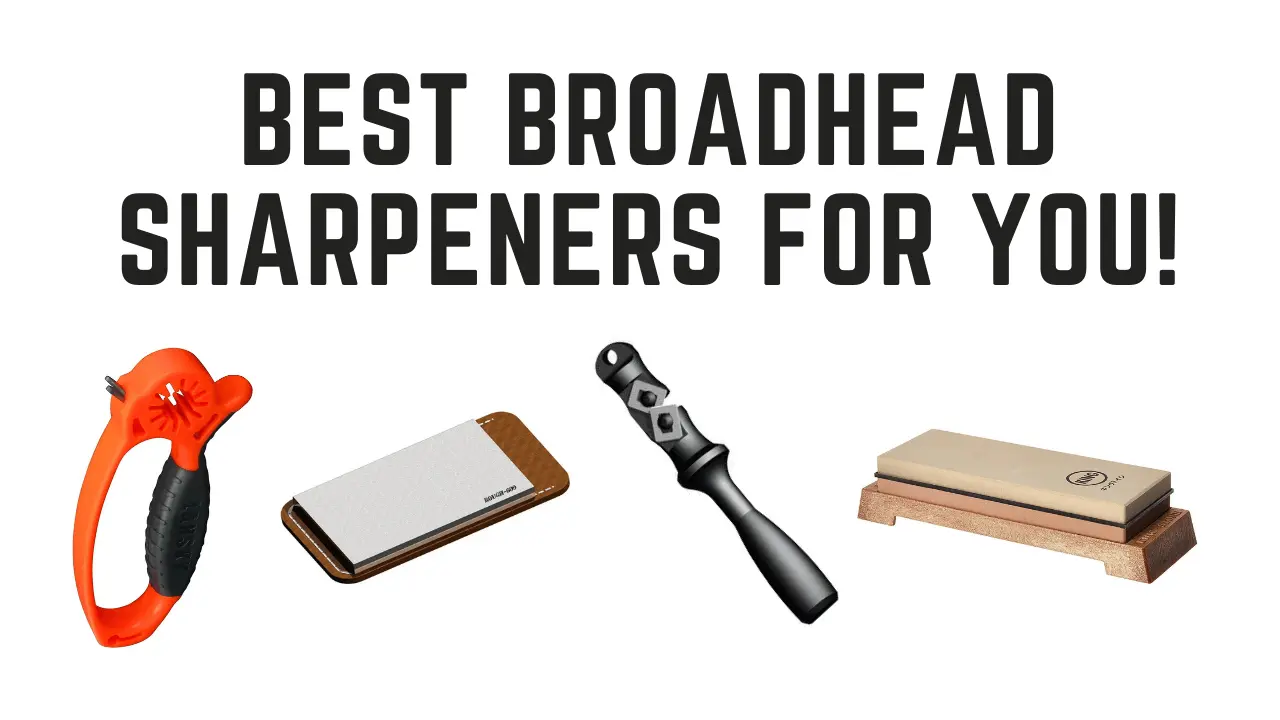Best Mechanical Broadheads for Deer In 2023
Mechanical broadheads have become the new talk of the town since they’re one of the most effective tools out there for hunting. The best part about them is that they are easy to use and effective, so they are valuable for both new hunters and veterans.
If you’re looking for the best ones out of all the mechanical broadheads in the market, you have come to the right place!
In this post, we will first tell you our favorites and then dig deeper into the details about our best mechanical broadhead picks. You can learn a lot from reading this article, which will help you improve your hunting skills.
Our Top Picks
| Broadhead | Model | Blades | Cutting Diameter | Price |
|---|---|---|---|---|
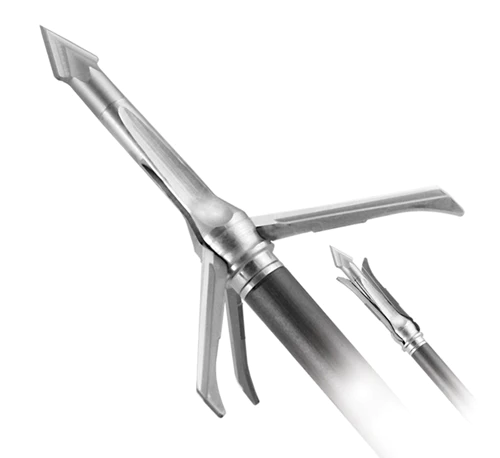 |
Grim Reaper Razorcut Whitetail Special | 2 | 2″ | Check Price on Amazon |
 |
Swhacker 100-Grain 2-Inch Cut | 2 | 2″ | Check Price on Amazon |
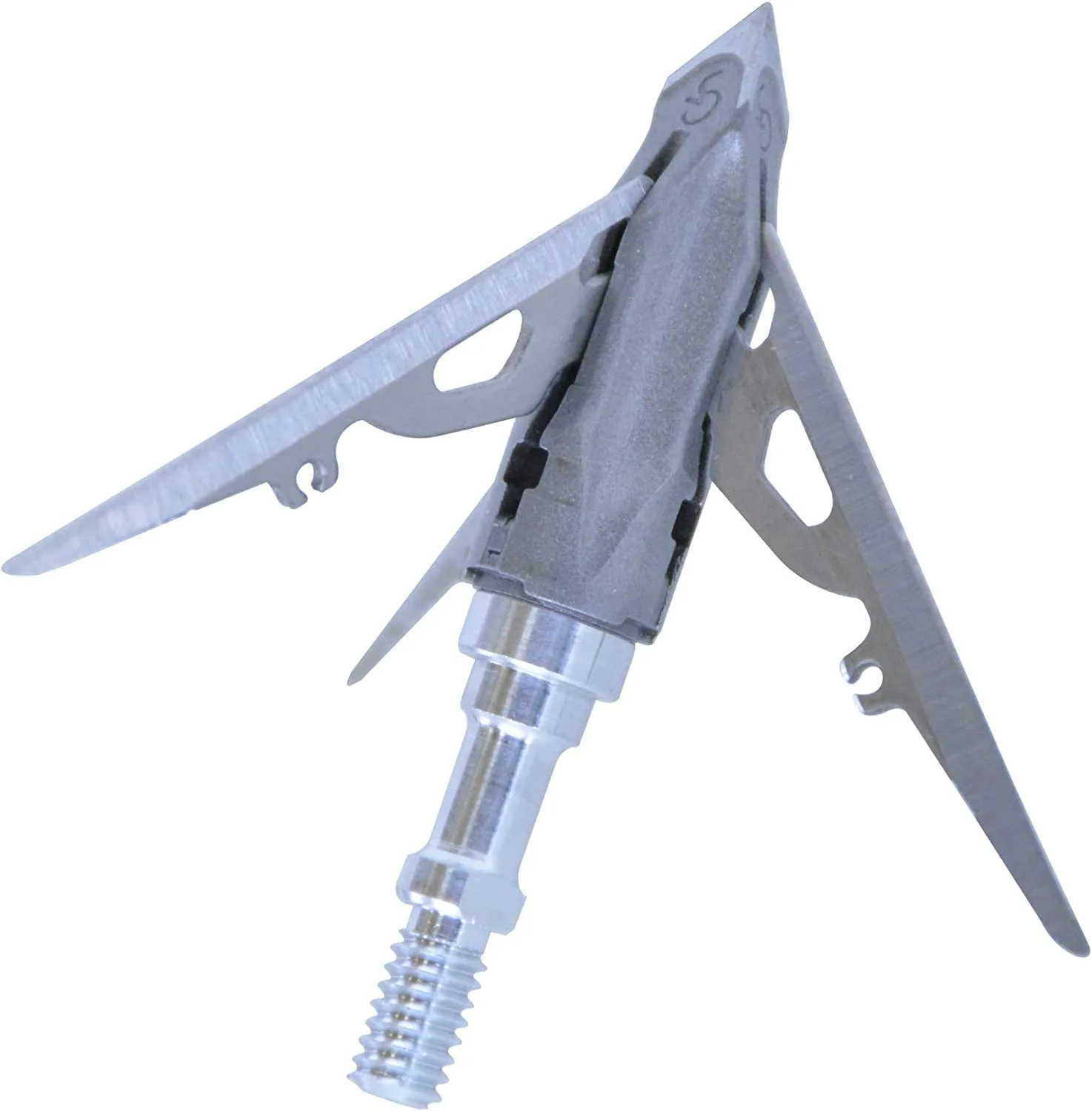 |
G5 Outdoors Montec | 3 | 1-1/8“ | Check Price on Amazon |
Mechanicals Broadheads: Our Favorites
Grim Reaper Razorcut Whitetail Special:
Product Details:
The Grim Reaper Razorcut has to be our favorite for its devastating effect in the whitetail size game and turkey. With its 2″ cut, 3 blades, and 100-grain design, you will leave massive holes and blood trails behind.
The unique design features a small unique mini-broadhead tip that splits hide and bone prior to the three blades. This creates a nice 2-inch wound channel.
Designed in a streamlined form, the Grim Reaper Razorcut is great for high-powered bows and medium size games. Its accuracy, combined cut-on contact, and chisel point make it top of the chart on the best mechanical broadheads in the market.
If you’re a bowhunter planning to get a big game this hunting season, the Grim Reaper Razorcut is definitely a worthwhile option to consider.
Rage Extreme 4-Blade Broadhead
Product Details:
Rage 4 Blade Broadhead is a good option for beginners new to the field because it flies straight and gives a lethal cut-on contact blow to the prey.
It is a hybrid model featuring a 2.3-inch cutting diameter of expandable rear blades.
These guarantee a wider cut making it likely that you get a lethal shot even if you’re slightly off. Even if you don’t target the kill zone, you will still be left with a thick blood trail so you can track your victim.
Another striking feature Rage Extreme has to offer is its fixed cut-on-contact tip with two blades perpendicular to the deployable blades. The tip is sharp and small at a diameter of 7/8 inches. This quality gives excellent penetration and minimizes resistance so your broadhead can get an accurate shot.
In addition, we have found this model to be more durable and reliable than other hybrid models of its kind. It’s anodized aluminum ferrule can withstand multiple uses. Furthermore, despite having multiple moving parts, the blade retention system shows exceptional consistency.
The only downside we see is that this mechanical broadhead requires shock collars. This means it’s necessary to replace the shock collars as well if you wish to reuse the broadheads. Rage does provide an extra one with each broadhead, so you can still use it efficiently over multiple hunts.
G5 Megameat:
Product Details:
If you’re looking for a mechanical broadhead you could reuse again and again during the hunting season, then we recommend the G5 Megameat. Besides its catchy name, the most noticeable feature of this mechanical broadhead is its snaplock collar.
This broadhead is more reliable and consistent. The blades open on contact giving the maximum advantage of the two-inch cutting diameter. These can get flimsy in case of long shots, but it’s great for lethal kills in the kill zone, especially with the combination of the chisel tip.
Swhacker Levi Morgan #261:
Product Details:
Thanks to its penetrative wing blades, Swhacker #261 is an excellent choice for whitetail hunters. The ferrule of Swhacker is made of anodized aluminum and has the appearance of a fighter jet. The aerodynamics give this mechanical broadhead great accuracy.
Its two separate cutting edges make it lethal for the prey. The first set cuts swiftly through the hide and ribs, while the second set remains razor sharp until it reaches the inside of the animal, providing a lethal blow to the internal organs.
The first set, called wing blades, thus take most of the brunt of the impact leaving the main blades for the deadly work. They also help the main blades to open. If the broadhead malfunctions and the main blades don’t open, the wing blades still leave a blood trail because of their 1-inch diameter.
You can easily replace the blades and reuse the broadheads on numerous targets.
Rage Hypodermic Trypan Broadhead:
Product Details:
If you’re looking for a broadhead for its thick blood trails, then Rage Hypodermic Trypan Broadhead is for you. It produces devastating results because of its razor-sharp 2-blade design, and its needle-point titanium ferrule cuts through prey quickly.
The blades are far from the normal or standard model and have smart engineering designs such as the narrow tip sharpening to a point, the blades which are forced back opening only on impact, and the reinforcement by extra steel, so they don’t bend backward.
All these features make the broadhead absolutely lethal. And Rage has definitely lived up to its legacy claim of thick blood trails since the Hypodermic is capable of burrowing through the game and leaving a generous blood track behind.
Muzzy Trocar:
Product Details:
This mechanical broadhead is a must-have if you’re hunting in extreme environments like the Rockies. It has a lethal stainless steel four-bladed structure that guarantees damage and an easy blood trail.
The two fixed blades with a one-inch diameter and two mechanical expandable blades that open on impact for a 1-⅝” cutting diameter are the most noticeable feature of this broadhead.
Not only do you get the reliability and dependability of a fixed blade, but you also get the accuracy and penetration of a mechanical blade.
The only downside of Muzzy Trocar would be that it comes in 100 grains only and has a complicated construction. Replacing the blades is not much of an easy job. Reusing means also re-sharpening the blades as well.
Nonetheless, it’s an absolute killing machine and is great for anyone who prefers low-powered bows as well.
Bloodsport Gravedigger:
Product Details:
Bloodsport Gravedigger is the best mechanical broadhead for those into hybrid models. This mechanical broadhead combines the best of both worlds providing maximum penetration and accuracy.
It flies swiftly with minimum wind resistance so that it doesn’t require a lot of time on the range to shoot. The fixed blade’s diameter of over an inch provides deep wound channels and serious cuts.
It comes with two options: a chisel tip or cut-on contact blades. So you can tailor the use according to the situation. The chisel tip for long-distance shooting and cut-on contact option for the best penetration.
The broadhead provides chances of hitting the kill zone, and even if you’re a bit off from target, you do get a decent blood trail of your prey. And dropping your quarry where it stands. On top of all these benefits, the broadhead is reusable.
The fact that it doesn’t use bands or collars makes it quite easy to reset. Lesser the number of parts, the easier it is to tune the broadhead or replace the blades.
LeanPro Mechanical Broadhead:
Product Details:
LeanPro is the best mechanical broadhead on the budget. It offers much value and is not as pricy as the rest. The best thing is its advanced design that has not been compromised, considering it’s a budget model.
The blade retention system removes any need for bands and collars and makes the broadhead more reusable. The blades of the broadhead aren’t the sharpest we have seen, but the cut-on contact still provides good penetration.
Moreover, you get six broadheads in a pack which is good value for money in case you lose one or break one. You can still continue your game with the rest of the same model.
NAP Killzone
Product Details:
The Killzone is one of the top-quality mechanical broadheads with 2 rear-deploying blades and a 2-inch cutting diameter. This gives the broadhead maximum accuracy and durability. The razor-sharp blades provide deadly results. The cutting diameter is also made to produce sharp entry and exit wounds.
What we like about the NAP Killzone is that it features a spring clip design for blade deployment. This feature eliminates the need for any rubber bands, clips, or retainers. The broadhead is made for accurate kills.
The ferrule is made of aluminum, while the blades are designed of steel. The broadhead has a cut-on-contact razor tip that provides extreme cutting and penetration. The broadhead comes in two weight options of 100 and 125 grains. It is designed for crossbows up to 400fps.
NAP Spitfire
Product Details:
NAP Spitfire is one of the most trusted names in the mechanical broadhead world. It has mechanical front-deploying blades which deliver reliable accuracy and trauma to drop your prey on the spot.
The best thing about Nap Spitfire broadhead is its ability to fly straight and has pinpoint accuracy. Diamize blades are ultra-sharp, which explains their ability to perform so well.
The Diamize sharpening process claims to create the sharpest blades in the industry, and we confirm that the blades are absolutely lethal. They provide massive hemorrhaging and knocking-down power. Don’t go on testing the blade on your fingers!
Besides its extra sharp blades, NAP Spitfire has a patented micro-grooved ferrule. This helps in increasing the accuracy of the flight and its penetration power. The tip has maximum bone-splitting power and unbelievable durability.
NAP Spitfire has a patented spring clip technology that ensures a swift flight with no need for rubber or collars. The spring-clip design doesn’t require a lot of pressure to deploy the blades.
How to Select Broadheads: Features to Keep in Mind
Broadheads come in two broad types for those who are new to the field.
The fixed broadheads are pretty much stationary razor blades you put at the end of the arrow. Though this sounds simple, fixed-blade broadheads are difficult to use for beginners.
The other category is mechanical blade broadheads, the ones we listed above, and they’re much easier to use, although their build is much more complex than fixed ones. They’re a better choice for novice bowhunters if they know how to assemble and use them.
As we have discussed various broadhead types, you might be wondering about the technicalities of some terms we’ve mentioned in this section. We will cover how they work and their main features, so you will be well-equipped with the knowledge to choose a broadhead fit for your hunting game.
How a Mechanical Broadhead Works
A mechanical broadhead is a type of broadhead that changes size and shape when it’s shot. It features blades that expand outward when they contact an animal. The blades are normally locked in place, and when they open, they are reinforced not to get pushed back and close.
This structure is clever, considering the narrow point at first guarantees accuracy while hunting, and the expanded blades on contact inflict maximum cutting power. Speaking of cutting power, let’s look deeper into one of the main features of a mechanical broadhead:
Cut-on-Contact vs Chisel Tip
The tips of mechanical broadheads come in two different varieties.
The chisel-tip broadheads have a chisel-like tip with no blades. The razor in these is located behind the point.
The cut-on-contact broadheads have a tip with the blades.
Although both these broadhead tips help penetrate the game, they do so differently.
The Chisel tip broadheads penetrate the hide and then burrow into the muscles. The chisel lodges firmly in the animal, and then the razors do their part of the job and start cutting away the vitals.
The chisel tip is broader, so it requires a greater deal of force and a high-powered bow to attain the force to cut through the hide and tissues. Once it does, it cuts through the bone easily.
The cut on contact broadheads begins by slicing the animal’s flesh and then cutting through the muscles. Although the tip is sharp in this case and cuts immediately, the tip is not too heavy enough to cut through the bones. These cut the animal as soon as they come into contact with it because it has greater penetrative power. However, this might not be the case if your arrow strikes the bone first. It would deflect and deviate from its path and might not take down the game if that’s the case.
In short, those of you having a lower draw weight bow should go with the cut-on contact tip, while those with a higher draw weight can resort to a chisel tip.
Front vs. Rear-Deploying Broadheads
Based on the way the blades of a mechanical broadhead open, the mechanical broadheads have two basic structures. The two versions include the following:
Front-deploying mechanical broadheads have blades that open up on impact when the front tip of the broadhead strikes the animal.
The blades are huddled close to the ferrule, and they open up inside the animal, upon which they cause a lot of internal damage. This also ensures the blades stay sharp for the internal organs and aren’t dulled by contact with the hide. They can rarely malfunction, so you don’t achieve full pass-through.
Rear-deploying mechanical broadheads have blades that remain closed during flight and open upon impact as well. The difference is that the blades open up when the rear portion of the blade strikes the animal.
The front part of the blades gets pushed back, causing the blades to expand outward from the rear of the ferrule. Expansion of the blades on the exterior of the animal causes large wounds at the entrance and exit.
So what should you choose?
Depending on the bow, if you have a low poundage bow, we suggest you go with the front deploying broadheads considering you aren’t putting much force.
If you’re using a higher poundage bow, then either one would do the job.
Cutting the Diameter of the Blades
The cutting diameter of a blade is the area of the blades that would cut through the game when they are fully spread out. The cutting diameter governs the performance of your broadhead and the accuracy of your hunting skills.
Cutting diameter is designed keeping in mind the following aspects:
Accuracy:
In order to have the most lethal effect on your prey, the cutting diameter needs to be large enough so that even if you miss your aim a bit and the arrow goes flying a bit off, the large diameter would still impact the game. That is, a less-than-perfect shot gets compensated if the diameter is not too small.
Although this helps hunters new to the hunting game, the air resistance makes the shot less accurate than would be obtained from a mechanical broadhead with a sleek tip and less cutting diameter. This con is rectified by using open-on contact blade arrow tips. The broadhead flies like a field tip but opens on contact giving maximum damage without compromising the accuracy.
Penetration:
A wide cutting diameter is important for penetration because the greater the diameter, the greater the area of the tissue it would cut on contact and through its course through the diameter. This would pierce the vital organs and produce a bigger exit wound. This is especially important because a bigger exit wound means a bigger blood trail.
But why is a bigger blood trail important? If you’re new, then you probably expect the animal to die on the spot once you’ve hit them. But that’s not what actually happens. The game still runs far away even when it is hit and dies at some other place that might even be out of sight. In this case, it is necessary to use a broadhead that would guarantee a big blood trail so you can track the victim down to his demise.
Number of Blades and Blade Thickness
Most broadheads have two or three blades. The number of blades gets a bow hunter excited, especially if they’re new to the game, because the more blades, the more damage they will do on entering the animal. If you’re a beginner or novice in a small to medium size hunting game, getting a mechanical broadhead with a greater number of blades will help you.
However, if you’re an advanced player, your skills would not need an extra blade to inflict maximum damage because blade number has a downside. The more the blades used, the more friction on the blades and the more likely they would be affected by wind and air resistance. Nonetheless, you can always rectify this issue with a down weight.
Apart from blade number, the blade thickness is also likely to affect the broadhead’s efficiency. Blade thickness usually ranges from 0.02 inches to 0.0375 inches. A greater thickness means:
- Better penetration through the hide
- More durability
- Less likely to deviate or bend while passing through the animal’s vital organs
Broadhead Weight in Grains
Broadheads come in a variety of weights ranging from 75 grains to even 150-grain varieties. But mostly, bow hunters prefer to stick to the 100-grain weight. It is probably because most of the arrows are created for 100-grain points as well. So if you buy a 100-grain broadhead, it is likely it will fit your arrows perfectly.
The 100-grain weight is also perfect regardless of the game you’re hunting, whether it’s deer, turkey, or black bear.
The larger grains of 125 or 150 are only needed if you’re hunting down very big animals such as elk. Greater the grain, the greater the momentum achieved. Larger animals require a greater deal of force to penetrate their hides and bones.
In short, for a short or medium-length game, a 100-grain broadhead would suffice, and you don’t need to go into complex math to figure out what would do best.
Broadhead Material and Makeup
Broadheads are made from strong and sturdy materials, from stainless steel to aircraft-grade aluminum. The stronger the material, the better it is for your game.
Bow’s Draw Weight
A bow is just as important in governing the outcome of your game as your arrow. It is known that at least a draw weight of 55 pounds is required to use a mechanical broadhead.
Getting a mechanical broadhead to pierce through an animal requires a lot of force, and if you chose a bow anywhere under 55 pounds, we doubt your broadhead would make the shot if you’re not ready to invest in a bow with draw weight greater than 55 pounds we suggest you switch the attention to fixed blades that would be more suitable for your low weight bow.
Final Words
Mechanical broadheads are a great way to hunt down the game if you’re using a high-weighing bow for hunting. These are lethal tools designed to fit the hunter. The various brands we have listed above are all based on our observations.
The thing with hunting gear is that it’s totally personal and depends on your skill. So regardless of what we say, you need some trial and error with exploring different types of mechanical broadheads to find what works best for you!

